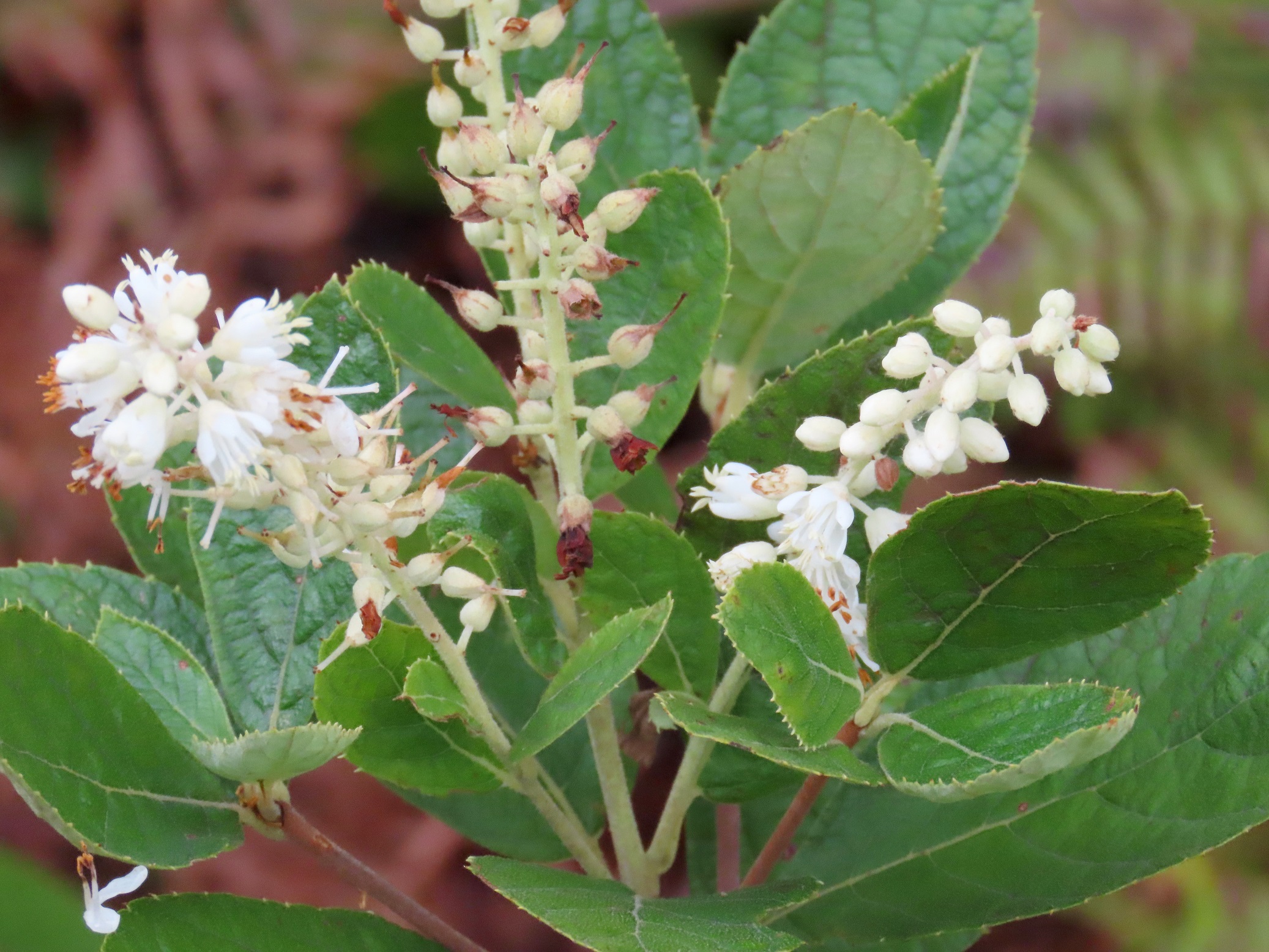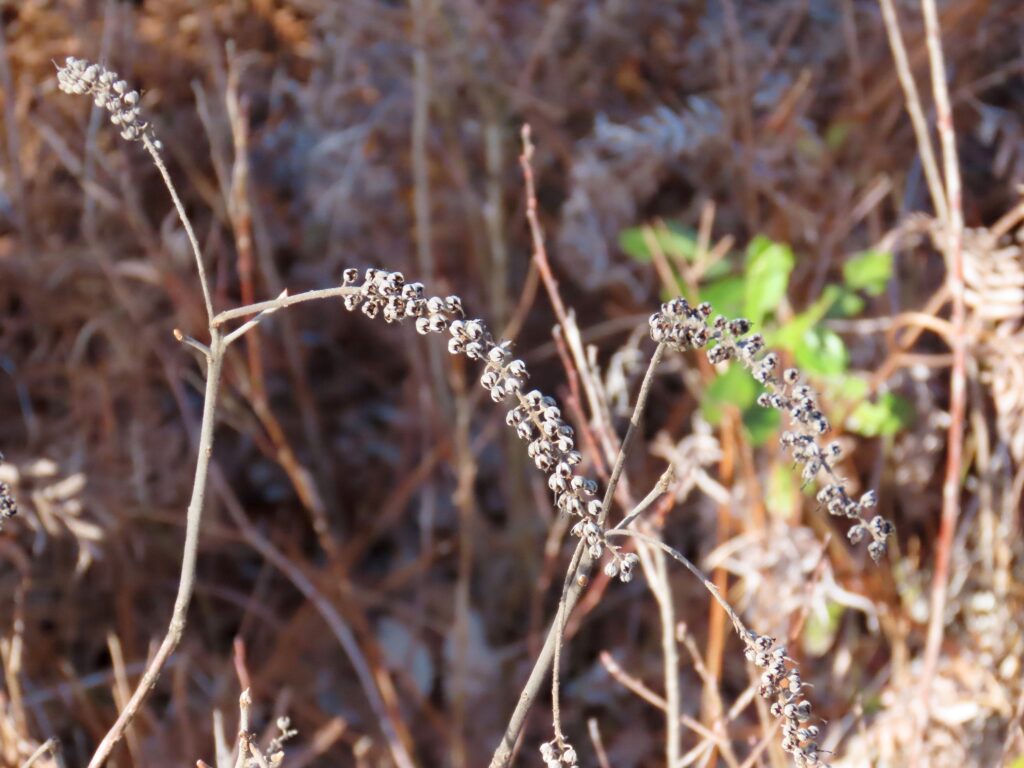




This week for Flora and Fauna Friday we have a spicy shrub that’s a summer safe haven for pineywoods pollinators, Coastal Sweet Pepperbush (Clethra alnifolia).
Coastal Sweet Pepperbush is found all along the East Coast and throughout the coastal plain of South Carolina. It grows on moist and generally acidic soils, often in partial shade. It’s a small deciduous shrub, growing usually chest to head height, and usually forming thickets. It does especially well in pine flatwoods where soil and light conditions are ideal for it and frequent fires free nutrients for new growth. Its leaves are alternate, fairly large, emerald-green, and widest towards the tip with that tip being pointed and its margin serrate. Its leaves also have diagonal veins that are nearly parallel, giving them a look that resembles Hazel Alder (Alnus serrulata), a shrub found along wetlands and creek banks, and the origin of our Pepperbush’s specific epithet of “alnifolia” or “Alder-leaved”. Coastal Sweet Pepperbush blooms in July and August, peaking between the two months. Each flower is about fingernail-sized, five-petalled, white with orange anthers, and arranged with dozens more flowers into a bottlebrush. These flowers have a pungent, sweet and spicy smell to them that lingers in the air like perfume around the thicket. Flower clusters are produced at the tip of each branch and held upright. Coastal Sweet Pepperbush flowers are a burst of white above the verdant brush that stands out starkly on the summer landscape. They draw in insects from the surrounding landscape and are an important source of pollen and nectar for native pollinators during the dog days of summer. Flowers mature into chains of small dry capsules that shake and scatter their seeds into the breeze. These dry fruits have a resemblance to a string of black peppercorns, and thus gives the “pepperbush” its name. These capsules are held aloft atop the plant through winter, making it an easy shrub to identify from mid-summer onward.
We technically, maybe, possibly, might, perchance, in theory, have two species of Pepperbush here in the Lowcountry. In addition to Coastal Sweet Pepperbush (C. alnifolia), there’s also Downy Sweet Pepperbush (C. tomentosa). Downy Sweet Pepperbush is much the same in appearance and ecology but has a stronger affinity to acidic sites, blooms a skosh later, and has a lot more hair across the plant. Most notably it has a silvery woolen leaf underside, hair along twigs and leaf margins, and shorter flower styles with downy hairs along them. These distinguishing features are somewhat variable across its geographic range but appear consistent within the pineywoods of South Carolina. However, the taxonomic jury is still out on whether Downy Sweet Pepperbush is a separate species or just a variety. So I’ve lumped them together here for the sake of today’s article. But do note, most of my photos are of Downy Sweet Pepperbush (Clethra tomentosa).